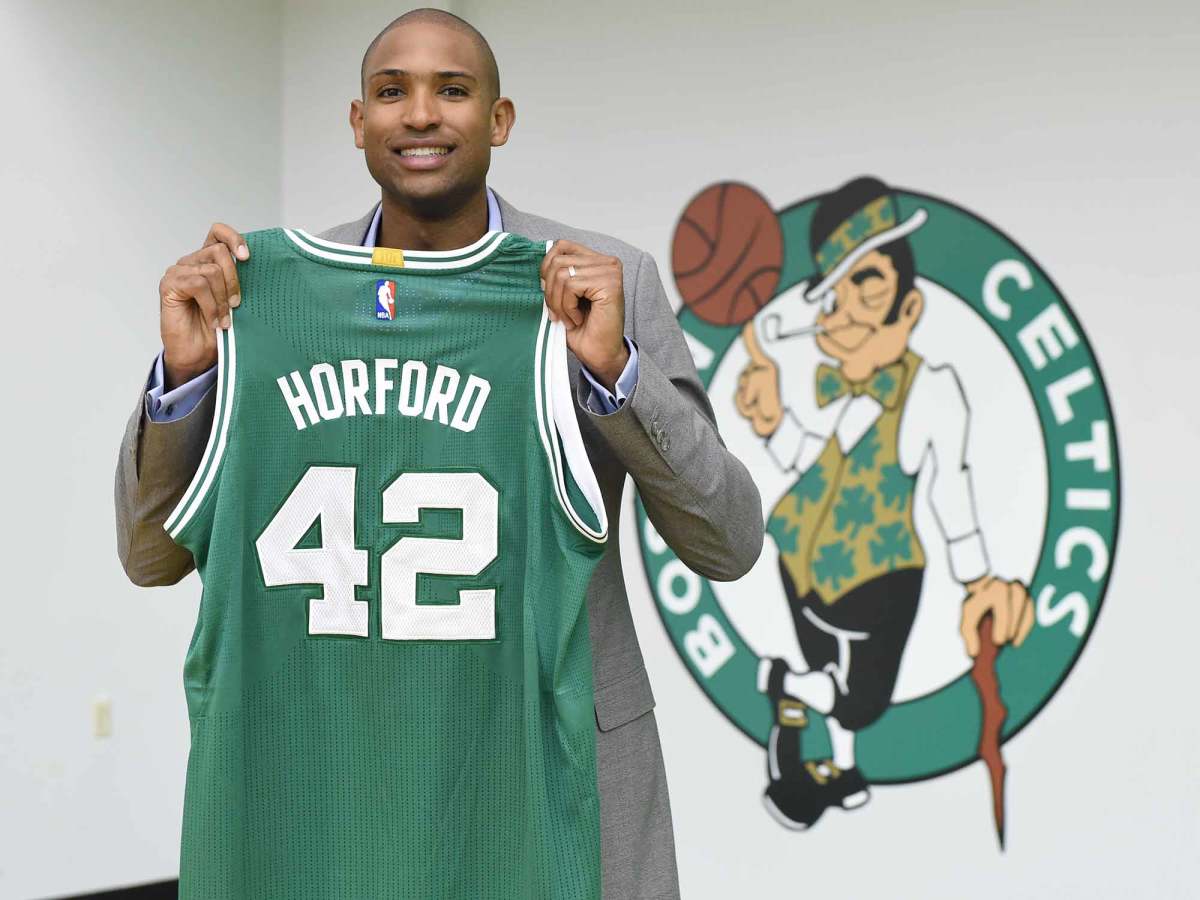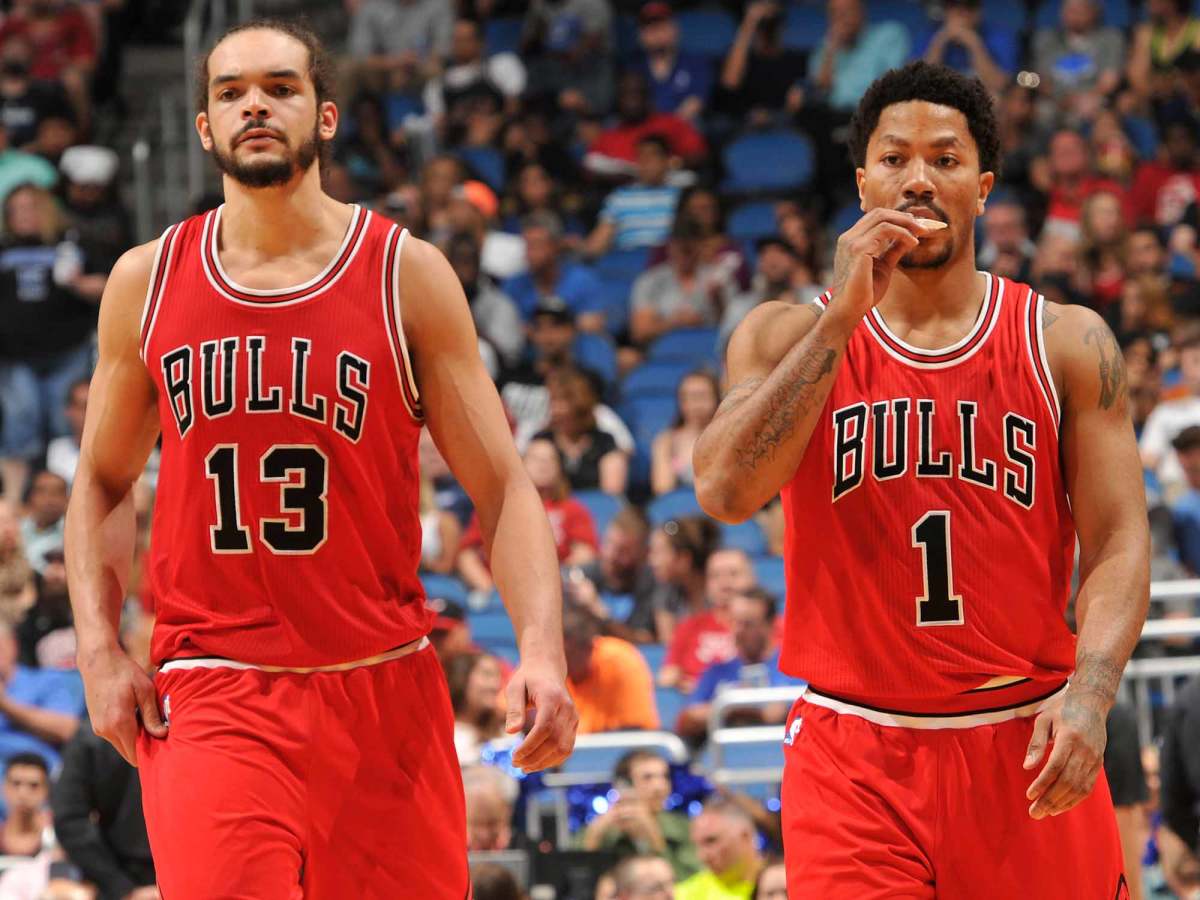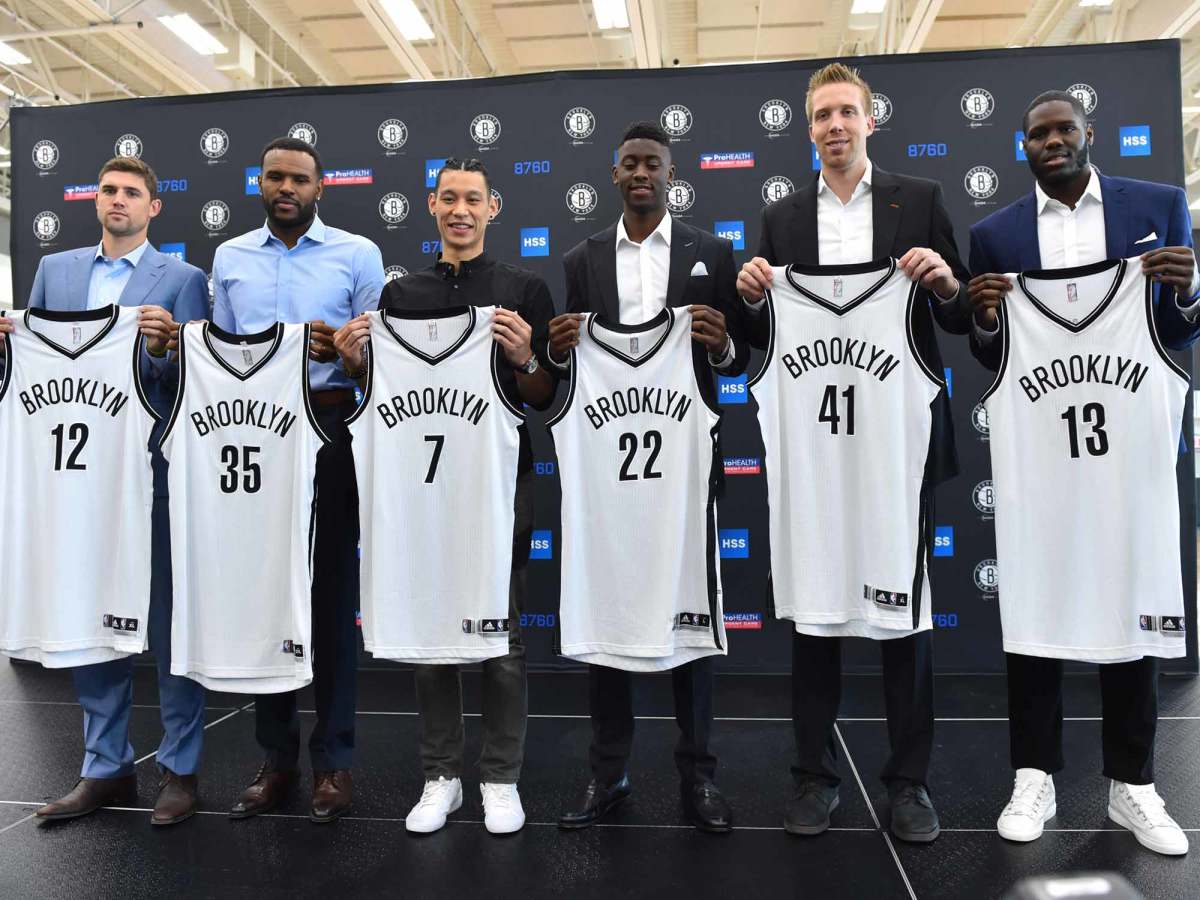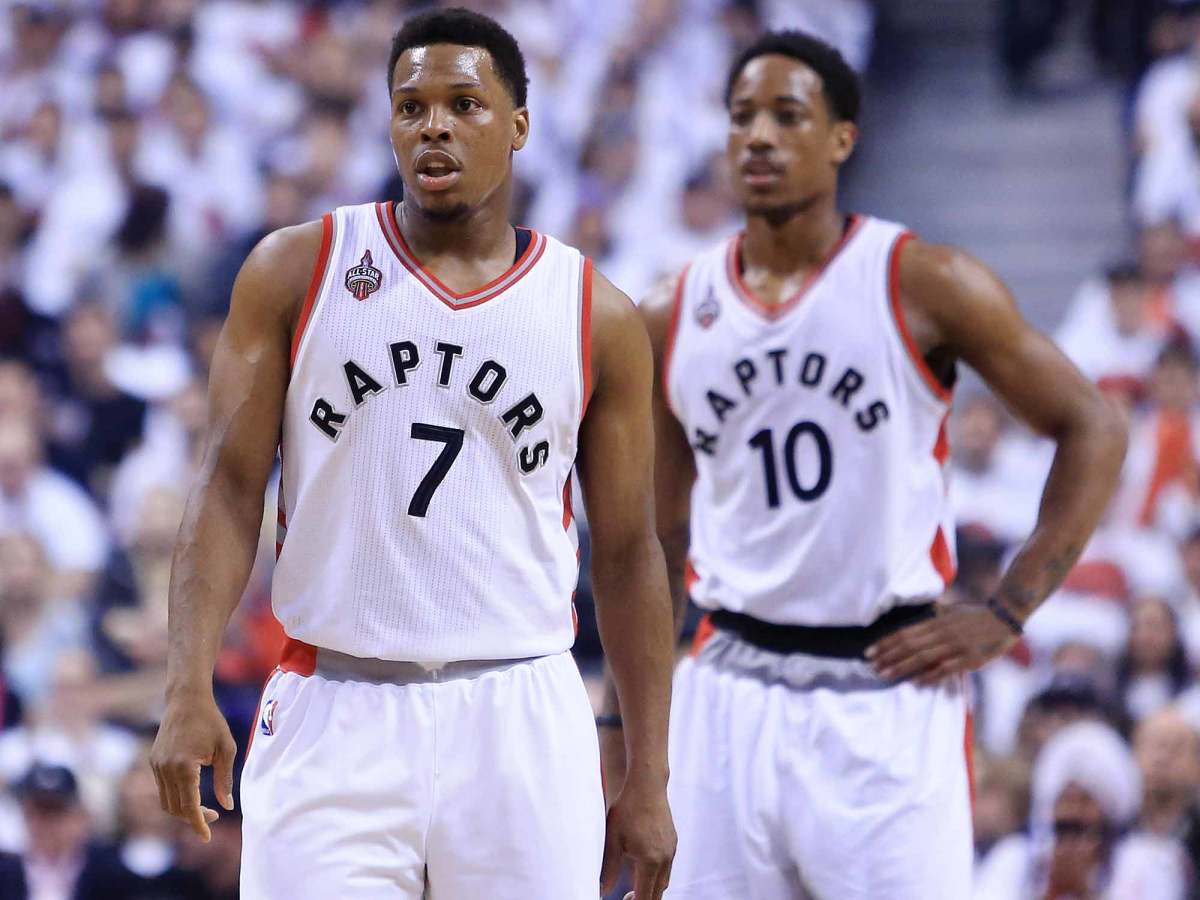NBA off-season grades: Knicks stay busy, but remain mediocre in improving Atlantic

With most of the NBA summer already in the books, SI.com is grading each team’s off-season performance and examining their best and worst moves. Today, we dissect the Atlantic Division, where two teams took major steps forward this summer (spoiler alert: the Knicks are not one of them). Previous grades: Central Division and Southeast Division.
Philadelphia 76ers
Best Move: Emptying the deck. Taking Ben Simmons (and not Brandon Ingram) signaled the Sixers are ready to be competitive again—and ready to try and figure out how these parts all fit. With Joel Embiid presumably ready to return, Dario Saric coming over from Turkey and Simmons here to anchor the franchise, the future in Philadelphia is bright for the first time years. Brett Brown can mix and match and the front office can decide which prospects to build around. Some of these guys are inevitably going to get traded, and some of them likely won’t pan out. But at least Philly is moving forward, finally. — Jeremy Woo
Worst move:No gambles. That the 76ers are actually trying to play with NBA-caliber players—as the signings of Gerald Henderson and Jerryd Bayless would suggest—is a welcome development for a team whose previous strategy was first utilized by a bored 13-year-old playing franchise mode on NBA 2K. Overall, the 76ers played things very safe this summer, mostly staying out of the free-agent frenzy despite gobs of cap space. Financial restraint is actually commendable, but Philly should have maybe looked harder at some of the young talent around the league. Maybe gamble on Dion Waiters for a year. Were they ever really in on Harrison Barnes? Employ the Brooklyn strategy? While it's OK to play things safe for now, Philly’s conservative nature shouldn’t carry over into the future. — Rohan Nadkarni
The Skinny:The transition of power from Sam Hinkie to the Colangelos easily could have resulted in regrettable decisions this summer. The new regime could have been too eager to blow money on veterans, or it could have overthought the No. 1 pick, or it could have rushed to clean house by dumping some of the roster’s excess young big men
So far, none of those nightmares have materialized. Instead, Philadelphia did just about everything right this summer, starting with the decision to select Ben Simmons. A matchup nightmare with elite playmaking skills, Simmons has franchise player potential, which is precisely what the Sixers needed after three years of “The Process.”
From there, Philadelphia did well to add to its deep pool of young talent, inking Croatian wing Dario Saric, a 2014 first-round pick, and taking French forward Timothe Luwawu in the first round. With Joel Embiid, Jahlil Okafor and Nerlens Noel all still on the roster, the Sixers have cemented their status as a “Must-watch” League Pass team early in the season. The collective intrigue of Philadelphia’s under-23 talent is off the charts.
The Sixers’ veteran additions were more or less restrained, targeted moves. Shooting guard Gerald Henderson arrives after spending one year in Portland on a reasonable two-year, $18 million contract. He won’t set the world on fire, but he gives coach Brett Brown a respectable and proven complementary backcourt option. Remarkably, Jerryd Bayless wound up being Philadelphia’s biggest splurge of the summer ($27 million over three years). Yes, it’s a bit shocking that a pedestrian back-up guard like Bayless is now a team’s highest-paid player, but he could prove helpful to Simmons’s Sixers, as he can stroke the three and play on or off the ball on offense.
Top 50 games of the 2016-17 NBA season
Lastly, Philadelphia indulged in a worthwhile (and modest) gamble, hoping that Spanish point guard Sergio Rodriguez’s return to the NBA will go over better than his first go-around. Rodriguez, a flashy playmaker who logged big minutes for Spain during the Olympics, played for Portland, Sacramento and New York from 2006 to 2010 before returning to his home country. Now 30, Rodriguez is a more mature and polished player who should enjoy the pressure-free environment in Philadelphia. Given that Philadelphia’s cap sheet is clean and that Rodriguez agreed to a one-year deal worth $8 million, you can file this move under “Sure, why not?”
With Simmons needing time to find his NBA footing and so many future draft picks still in the pipeline, Philadelphia did well this summer to prioritize an organic rebuilding process over a rush job. At the same time, the Sixers added multiple hole-plugging veterans on reasonable contracts who should help this year’s group avoid the ultra-ugly embarrassing campaigns that came to define the Hinkie era. Good stuff.
Grade: A

Boston Celtics
Best Move: Al Horford, duh. Despite their wealth of trade chips, the Celtics have been unable to acquire a franchise-altering star in recent years. But Boston's luck finally changed this summer when it landed a high-profile star in Al Horford. Of course, this is 30-year-old Al Horford, but his diverse set of skills and versatility makes him an ideal cog for a fluid Celtics roster. Brad Stevens will enjoy empowering Horford on both sides of the ball, and Celtics fans will keep waiting for another star to arrive. We’ll see how long it takes this time around. — J.W.
Worst Move:Not cashing in. While Al Horford is a coup, Jaylen Brown is a question mark at No. 3, and fellow first-round selection Guerschon Yabusele won’t be on the team for at least one season. Boston’s picks weren’t as highly valued around the league as they were on trade machines, which made it hard for them to snag someone like Jimmy Butler this summer. This isn’t all Boston’s fault, but instead a stark reminder of the perfect storm needed for teams to acquire a franchise player. — R.N.
The Skinny:Celtics president Danny Ainge absolutely nailed his biggest move—the successful free-agency pursuit of Al Horford—and sometimes that’s enough to carry an entire summer.
Horford, the second-best free agent to change teams this summer, makes for a brilliant fit in Boston: he fills a positional need, he open up numerous big-man combinations for coach Brad Stevens, he's a committed contributor on defense, he can play inside and out and he has extensive postseason experience. All of those factors should come in handy as Boston looks to build on a 48-win season and win a playoff series for the first time since 2012.
The on-court stuff with the Horford addition is only half the story. Because Ainge had so thoroughly stripped down his roster in recent years, the Celtics were perfectly positioned to offer Horford a four-year max contract without feeling real pain. While the 30-year-old Horford’s play could start declining before the end of his new contract, Boston won’t be boxed into a corner if that happens because it currently has no other truly significant contracts on the books.
The best part, though, is that Ainge was able to acquire a legit All-Star without sacrificing young players or draft picks in a trade. Now, Boston can prepare for another round of trade rumors as Ainge looks to further closer the gap with the Cavaliers. Between Stevens, Horford, Isaiah Thomas, Jae Crwoder and an elite defense, the Celtics now have a strong case as the second-best team in the East. And, unlike some of their second-tier competitors like the Raptors, Hawks and Heat, they didn’t suffer any truly damaging roster departures this summer. Evan Turner’s all-around contributions off the bench will be missed, but his move to Portland is hardly a backbreaker.
NBA off-season grades: Southeast up for grabs after Hawks, Heat undergo overhauls
Ainge’s only other move of major consequence was selecting 19-year-old wing Jaylen Brown with the No. 3 pick in the draft. Although that selection was met with a mixed reaction due to Brown’s somewhat unimpressive freshman season at Cal, he showed promising flashes towards the end of Las Vegas Summer League and he will be in position to develop gradually in a limited role.
The most exciting part of Boston’s summer is what it will mean for Stevens, who has done well to maximize a fairly limited rosters during his three years in the pros. Now, Stevens can shift gears, turning his attention to assimilating Horford and, if everything goes according to plan, boosting Boston’s offense into the top 10 for the first time since 2009. Even if the Celtics remain at least one more move away from true title contention, there’s no denying that they significantly improved their three-year outlook over the last few months.
Grade: A

New York Knicks
Best Move: Trying, for Carmelo. Carmelo Anthony now has three gold medals and is the most decorated Olympian in U.S. men's history, but people have come out in droves to remind everyone that Anthony doesn’t have an NBA ring. I’ve developed some respect for Anthony’s willingness to wait it out in New York, and though the actual plan is 100% flawed, at least the Knicks’ front office is trying to give him help. Derrick Rose and Joakim Noah have seen better days, but they will certainly make the Knicks’ season interesting. Let’s just hope young Kristaps comes out of this mess with his touches intact. — J.W.
Worst Move: Signing Joakim Noah. The NBA’s other superteam, the Knicks, acquired a culture upgrade by bringing over Derrick Rose and Joakim Noah from Chicago. While the Rose gamble is mitigated by his one-year deal, the Noah signing already screams disaster. A passing savant and defensive tone-setter at his height, Noah has been beset by injuries the past two seasons. Noah could only muster 21.9 minutes per game in 2015–16. Even with the massive cap spike, Noah already looks like an overpay in Year 1, and his contract could be much worse by Year 4. Noah will probably end up being a slight downgrade from the departed Robin Lopez. — R.N.
The Skinny:The only things standing between the Knicks and an “A” for their off-season grade is a time machine and an invincibility cloak. Unfortunately, Phil Jackson’s major additions are living in 2016, rather than 2011, and they are burdened by years of accumulated health concerns.
That’s really all it takes for New York’s summer to be viewed in a pessimistic light. Rose, one of the NBA’s least efficient high-volume shooters, will earn $21 million next season before hitting unrestricted free agency next summer. In the likely event that his play on both sides of the ball continues to lag far behind his top form from five years ago, Rose would wind up being an “all sizzle, no steak” addition. In the unlikely event that he finally gets his career back on track after multiple knee surgeries, New York would be forced to pay him while continuing to worry about his health. Adding Rose was a lose-lose proposition, and that’s before one accounts for the fact that trading for him cost the Knicks a reliable and productive center in Robin Lopez.
Signing Noah, 31, to a four-year deal worth $72 million following the worst season of his career is simply inexplicable. The former All-Star and Defensive Player of the Year has been hit hard by injuries over the last two seasons, and his lacking offensive game has been increasingly difficult to work around. New York is left praying that Noah will somehow be able to reclaim and sustain his peak mobility and motor on defense. Otherwise, his signing could look like one of the summer’s worst by the time the trade deadline rolls around.
Trade grades: Knicks' deal for Derrick Rose all sizzle and no steak
Jackson’s other moves—signing shooting guard Courtney Lee (four years, $48 million) and back-up point guard Brandon Jennings (one-year, $5 million) were far more agreeable. Lee fits in nicely as a complementary 3-and-D option, while Jennings is a capable stand-in starter should Rose find himself donning street clothes.
If there’s a winner here, it’s probably All-Star forward Carmelo Anthony, who may enjoy the illusion of playing for a team that seems serious about a postseason run. Rose, Noah and Lee all boast significant postseason experience, and all are aligned fairly closely in age with Anthony. Given New York’s lacking depth and the very real possibility of an injury or two blowing apart this plan completely, Anthony would be wise to keep his expectations in check.
The most flummoxing part of New York’s off-season, however, is what it says about Kristaps Porzingis. New York’s Rookie of the Year runner-up finds himself on a veteran-dominated roster that apparently wants to win now. Porzingis also finds himself as a tertiary option on the pecking order, given Anthony’s alpha role and Rose’s natural scoring inclinations. Jackson will have a lot of explaining to do if these new roster circumstances cause Porzingis to plateau in Year Two.
Needless to say, new coach Jeff Hornacek will have his hands completely full. In Phoenix, Hornacek overachieved in his first season before falling victim to an imbalanced roster, personality conflicts, and unresolved tension among his leading offensive options. Gulp. Hornacek must now find a way to keep both Anthony and Rose happy with their roles on offense and motivated on defense, develop Porzingis, balance Noah’s availability issues against his roster’s lack of interior depth, and keep Jackson involved with the philosophical approach of the team. Gulp again.
The safe money here is to bet on something going wrong after a splashy summer that lacked a coherent vision.
Grade: D

Brooklyn Nets
Best Move: Not doing anything crazy.To be totally fair, Brooklyn’s new front office took on a wildly awful assignment. With the next few seasons likely a wash, the Nets did the wise thing this summer by making sure they didn’t jeopardize their future. They tried, of course, with restricted free-agent offers to Allen Crabbe and Tyler Johnson, but both the Blazers and Heat elected to match the massive offer sheets. That's probably a good thing for Brooklyn as it'll benefit from not having its hands tied long term. Now, they have to hope rookies Caris LeVert and Isaiah Whitehead can break into the rotation by the spring. — J.W.
Worst Move: Targeting restricted free agents. The Nets had a promising off-season under new general manager Sean Marks, but their biggest plans were spoiled by other teams. Instead of Brooklyn radically re-making its core with young, athletic guards, it was left with Trevor Booker and Jeremy Lin as its key acquisitions. While Booker and Lin are solid veterans for a team in desperate need of some, they don’t really give Brooklyn much to build around. The Nets did what they had to do—they did their best to offer hard-to-match deals—but Marks was given a sobering reminder of the uphill battle the Nets have to climb in their rebuilding efforts. — R.N.
The Skinny: Forget about Jay-Z. Memphis Bleek and Amil wouldn’t be caught dead sitting courtside at a Nets game this year. Brooklyn’s roster is the worst kind of depressing: it’s loaded with veterans but lacking in star power. Simply put, there’s not much to cheer for in the short term and there’s not much to dream about in the long term, either.
Unfortunately, that was going to be the case no matter what new GM Sean Marks did this summer, as Brooklyn’s previous regime will be shouldering the bulk of the blame for the state of the Nets roster for at least the next two or three seasons.
Brooklyn’s guiding principle this off-season seemed to be: “Avoid making the type of big mistakes that got us in this mess in the first place.” As such, the team failed to acquire any players that generate true excitement or optimism. Jeremy Lin is likely to be a fan favorite and he’s set up for success thanks to an established relationship with new Nets coach Kenny Atkinson, but he’s not cut out to be a franchise savior.
• NBA’s biggest off-season moves of last 15 years | Free agency’s worst deals
Marks’s other major signings—Trevor Booker, Luis Scola, Greivis Vasquez and Randy Foye—would all make more sense if Brooklyn was a 48-win team trying to fill out its bench rather than a team stuck in a long-term rebuild. The fact that all four veterans arrived on short-term contracts isn’t really a win, but rather a sign that they are fairly anonymous placeholders for a team that knows it’s not quite ready to build a real core yet. Really, the best-case scenario is that these middling veterans turn into trade chips at the deadline. Poor Brook Lopez.
The Net’s biggest textbook rebuilding move—cashing in Thaddeus Young for a first-round pick they used to draft Caris LeVert—was perhaps Marks’s best play of the summer. At his age, Young was better suited to a team with playoff aspirations, while LeVert, 21, has the potential to be a rare beacon of hope in the Barclays Center wasteland if he can move past a leg injury that brought his senior year at Michigan to an early end.
After so many years of risky and/or expensive moves, Brooklyn’s boring summer practically feels like a relief. At the same time, this is still an organization that could very well take a step back after a 21-win season despite the presence of numerous vets in its rotation. In other words, this is a new flavor of awful, but it’s still awful. On the bright side, Marks didn’t shoot himself in the foot right off the bat, which counts as a promising sign in an environment where expectations really couldn’t fall any lower.
Grade: C-

Toronto Raptors
Best Move: Keeping DeRozan home. This was kind of a no-brainer, and never even felt that up in the air, but the Raptors couldn't afford to lose DeRozan, who could very well end up as the most important player in franchise history. That’s some admittedly heavy conjecture, but what Toronto has accomplished with the trio of DeRozan, Kyle Lowry and Masai Ujiri has been one of the NBA’s better success stories. His contract is huge, but points to stability within the franchise, and the team was predictably thrifty around him in adding free-agent Jared Sullinger and draftee Jakob Poeltl, who should both contribute to the frontcourt this season. Keeping Lowry at a fair price after the upcoming season, in which he’ll turn 31, might be trickier. — J.W.
Worst Move: Not signing LeBron James. The Raptors didn’t really do anything this summer. They let Bismack Biyombo walk, which made sense considering they'd already committed big money to Jonas Valanciunas. They’ve been near the top of the East for a few years, but like everyone else in this conference, are handcuffed by LeBron James's existence. Keeping DeMar DeRozan ensures the Raptors will be a playoff team in the East. There’s just not much more they can do after that. — R.N.
The Skinny: The Raptors threw the party of a lifetime during the 2016 playoffs, fighting through longstanding questions about their postseason resolve to advance to the Eastern Conference for the first time in franchise history. Then they woke up on July 1, saw the bill, and grimaced as they reached for the credit card.
Make no mistake, All-Star guard DeMar DeRozan had one heck of a contract year in 2015-16, logging big minutes and posting career numbers. DeRozan enjoyed numerous advantages in his negotiations with the Raptors: he had formed a strong relationship with the fan base over seven years in Toronto, he had struck up a deep friendship with fellow All-Star guard Kyle Lowry, his contract came due at the peak of Raptors-related excitement, and he displayed night-to-night dependability throughout the 2015-16 season after missing 20+ games due to injury the previous year. Raptors GM Masai Ujiri didn’t have much of a choice: he had to pay up to re-sign DeRozan or risk an immediate backlash among fans and within the locker room.
NBA off-season grades: Central challengers stay busy, but Cavs maintain dominance
With all of that context in place, there’s still no way to characterize a five-year, $139 million contract for DeRozan as a great development for the organization. Indeed, as soon as DeRozan’s pen hit the paper he became one of the league’s highest-paid players—and perhaps its most overpaid. Is it possible for any guard with limited defensive impact, no three-point range and minimal skills as a playmaker to deliver on a $27 million per year contract? No, or at least not easily. Despite the rising salary cap and the fact that DeRozan gave the Raptors a slight hometown discount, a contract as large as this will crimp Ujiri’s ability to add premium talent going forward.
That handicap arguably commenced this summer, as the Raptors, with a payroll already topping $100 million, elected not to re-sign Bismack Biyombo. A key figure throughout Toronto’s postseason run, Biyombo played his way into a handsome deal with Orlando, leaving the Raptors to replace him on the depth chart with rookie Jakob Poeltl. The Austrian 7-footer seemingly represented good value at No. 9, but he will almost certainly need years of development to become an impact player. Toronto’s defense, as a result of the center swap, will almost certainly take a step back next season.
All-Tokyo Team: Building out a squad of Olympic rookies for the 2020 Games
Ujiri’s only other noteworthy summer move aimed to address the power forward spot, a source of recurring stress in recent years. Toronto settled on signing Jared Sullinger to a one-year, $5.6 million contract, a classic “Let’s hope it works out, but we’re not screwed if it doesn’t” signing. Raptors coach Dwane Casey will welcome Sullinger’s rebounding skills and may also look to encourage the former Celtic’s desire to shoot from beyond the arc in hopes of generating space in the half-court.
The sum total here—more than doubling DeRozan’s salary, losing Biyombo, going sideways with Sullinger as a replacement for Luis Scola and James Johnson—is a definite step backwards. Even so, Toronto remains one of the East’s deepest teams and it will enjoy the benefits of strong continuity as it eyes another extended postseason run.
